The
fire place of 25 bricks
|

Buy 25 bricks, here cinder blocks
|

If you want, you can
lay base stones, this means: small stone
slabs, e.g. on a balcony, then
everything runs without damage
|

For a cooking
process, you need some chopped wood, a
mixture of thin and thick little
branches
|
At the beginning, one of the concrete blocks is cut
in half with the appropriate tools, so first a track
is made (with hammer with screwdriver, hammer with
crowbar etc.) (4'25''). Then hit the track from both
sides with the hammer until the concrete block
breaks (4'49 ''). Then the first layer is put:
U-shape with the halved concrete block in a corner,
the opening is the air access from below (5'33 '').
Second layer: U-shape across with side entry for the
wood (6'28 ''). Third layer: full circle, and now
the access for the wood is ready (7'11 '').
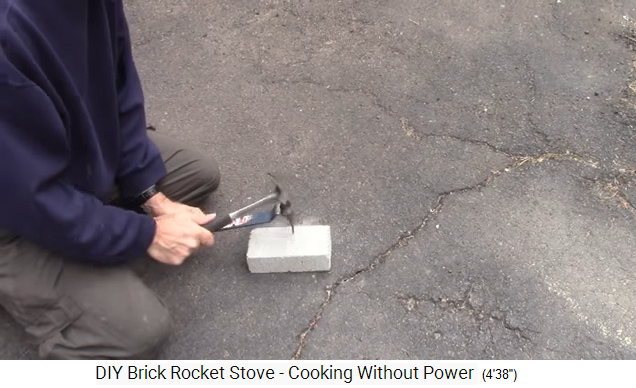
A concrete block is
halved 01: The track is laid
|

A concrete block is
halved 02: Hit the trail
|

And then the concrete
block breaks in two halves
|

Now the first layer is
laid in a U shape, with the air access
|
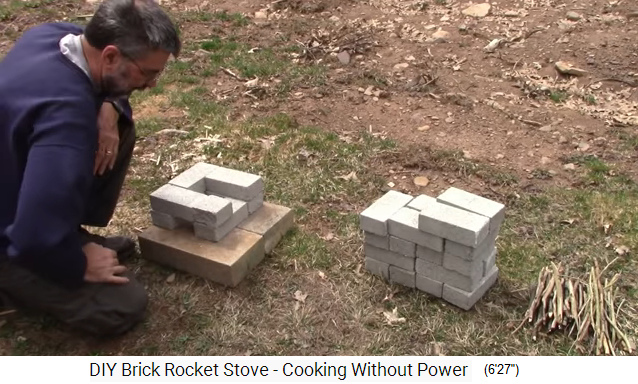
The second layer is
also laid in a "U", but across, with an
entrance on the side for the wood
|

The third layer is a
closed circle, and the second access is
filled with the wood
|
Now three more layers of bricks are put so that the
combustion chamber is long enough to develop a
draft, so that the air will be automatically drawn
in and an absolutely efficient combustion takes
place (7'57 ''). The fire then roars like a machine
(8'1 '').
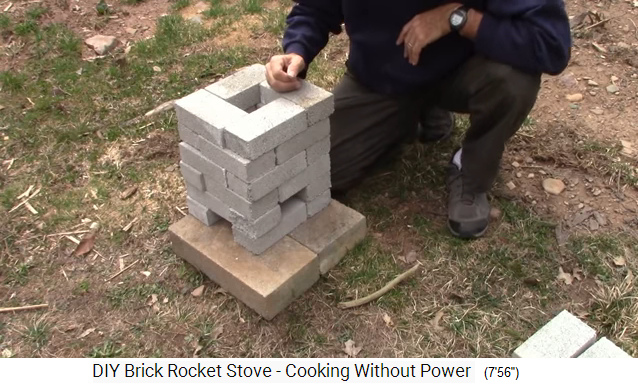
Now there are 3 more layers, in total the
fire channel consists of 6 layers of
bricks, in which the fire becomes strong
enough and draws air
|
As a top part to hold the saucepan, one can use a
gas stove attachment, the important thing is simply
that the air can pass under the saucepan (8'28 '').
If you don't have a gas stove top, you can also
attach two bricks at the top and place the saucepan
the bricks (8'44 ''). As the last step of
construction, a brick is placed in front of the wood
access as a base for the inserted wood (8'53 '').

A gas stove top is
ideal for the brick cooking place
|
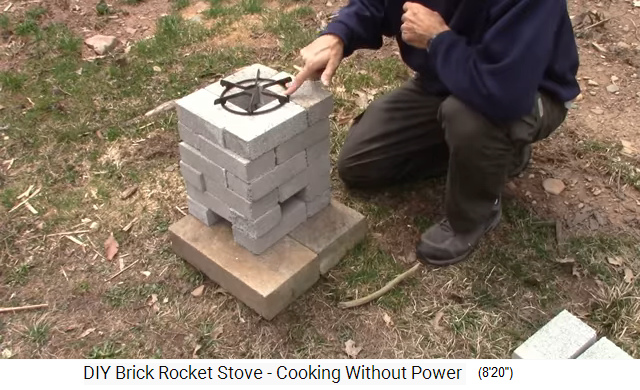
The gas cooker top is
placed on the brick cooking place, for
the saucepan
|

You can also put two
bricks for the saucepan
|

The brick in front of the wood access is
the basis for the wood supply
|
|
|
|
This fire place is ideal for emergency situations
when there is no electricity or gas available (9'7
'') [and when the sun is missing]. Now a stew is
being prepared (11'26 '').

Now a stew is being prepared
The fire: 1 sheet of paper is crumpled up and placed
in the air inlet (12'14 ''). Then small, thin
branches are inserted into the wood access (12'19
''). Then dry material comes in from the top, in
this case dried acacia needles (12'55 '').
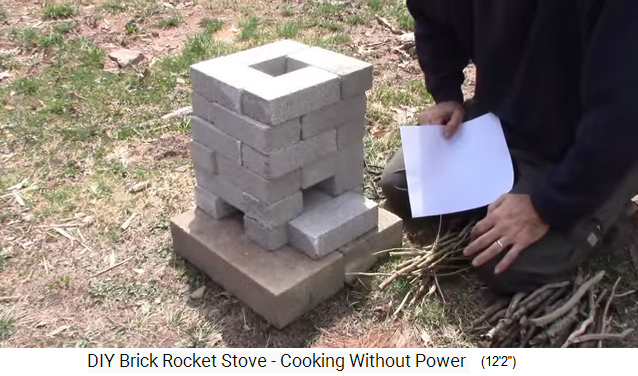
Start of fire: igniter 01 is a sheet of
paper
|
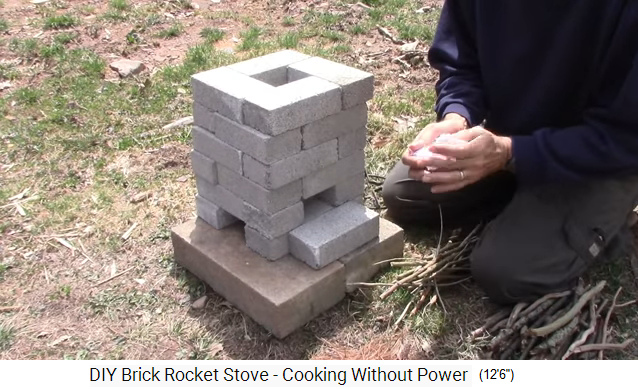
Igniter 01: The sheet of paper is crumpled
up
|
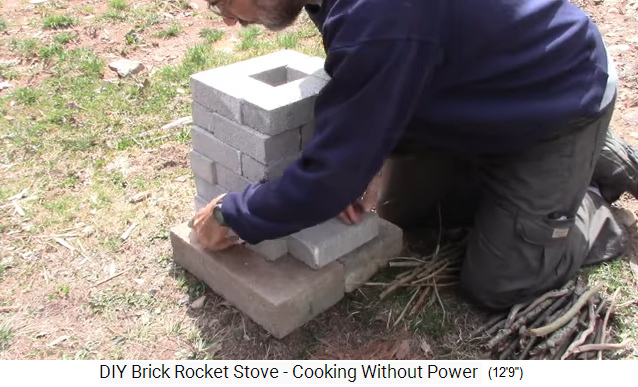
Igniter 01: The paper ball is inserted
into the air inlet
|

Wood suply: First, only small, thin
branches are inserted
|

Igniter 02: dried acacia needles
|
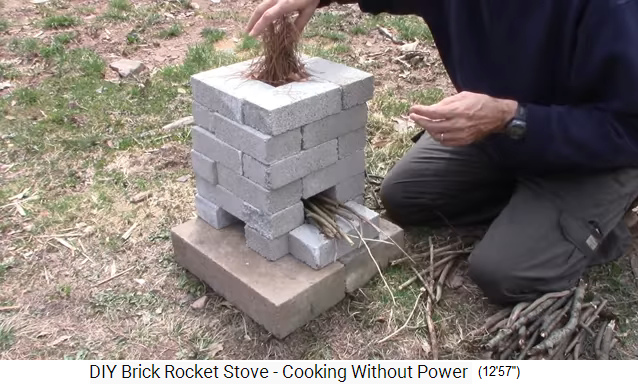
Igniter 02: dried acacia needles are put
in from the top 01
|

Igniter 02: dried acacia needles are put
in from the top 02
|
|
|
Then the fire is ignited in the air access below
with a pipe lighter, the paper first smokes heavily,
then air is blown in (13'39 ''). When the paper is
burned, the fire becomes smoke-free and highly
efficient (13'54 '').
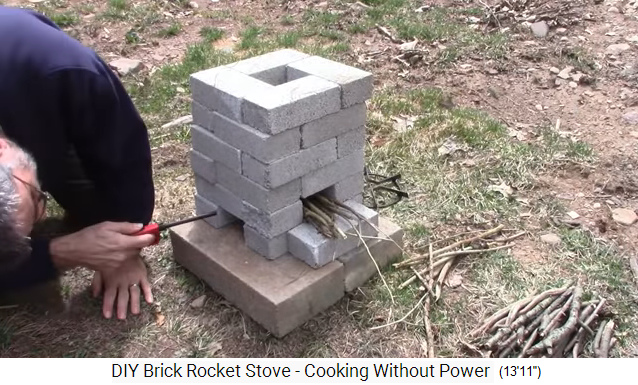
The fire is lit with a pipe lighter in the
air hole 01
|

The fire is lit with a pipe lighter in the
air hole 02
|

The lit paper develops a big smoke
|

Now one can blow some air into the air
access yet
|
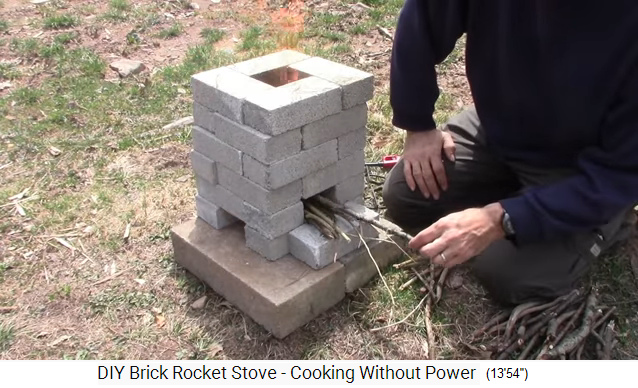
After about 1 minute, a smoke-free wood
fire with efficient combustion comes up
|
The wood supply is minimal, is constantly being
replenished (14'4 ''). The air is drawn in through
both sides, air hole and wood hole, but most of the
air is drawn in through the lowest hole, the air
supply (14'48 '').
[The fire is smoke-free and is as efficient as a gas
stove with the efficient combustion of gas].
Then the last thing is the gas stove top and the
saucepan on top (15'49 '').
The fire is still more efficient (16'24 ''). Now the
saucepan is placed on top and the cooking procedure
begins. You have to keep pushing the sticks, because
they burn away quickly (17'0''). The branches burn
best with a mixture of thick and thin branches
(17'19 '').

The cooking process:
Sticks are added on and on
|

Best is a mixture of
thin and thick branches so the fire
burns best
|

The fire in the fire
channel, view through the wood entrance
|
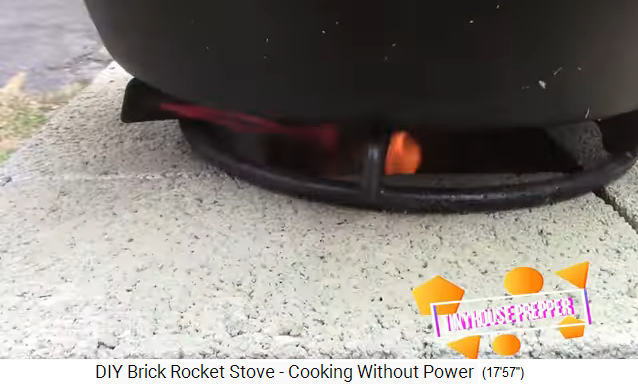
The long flames lick
the saucepan, like on a gas stove
|

After 10 minutes the
stew begins to steam
|

The air access is
regulated with a brick, half covered or
almost completely covered
|
After 10 minutes the stew begins to steam (18'35
''). The air access is regulated with a brick, half
covered or almost completely covered you can
regulate the fire, which then becomes less strong
(19'48 ''). And then the rice stew is served (21'24
'').
[If you live on the edge of the forest or near many
trees or shrubs and want to cook without electricity
and gas, and if there is also no sun, you can cook
efficiently with only a small amount of wood].

The rice stew is ready
|

The rice stew in a bowl
|

Rice stew is eaten from the 25-brick and
wood cooking place
|





 The cooking process: Sticks of wood are pushed in - The long flames lick the saucepan, like on a gas stove - The rice stew in the bowl
The cooking process: Sticks of wood are pushed in - The long flames lick the saucepan, like on a gas stove - The rice stew in the bowl

































